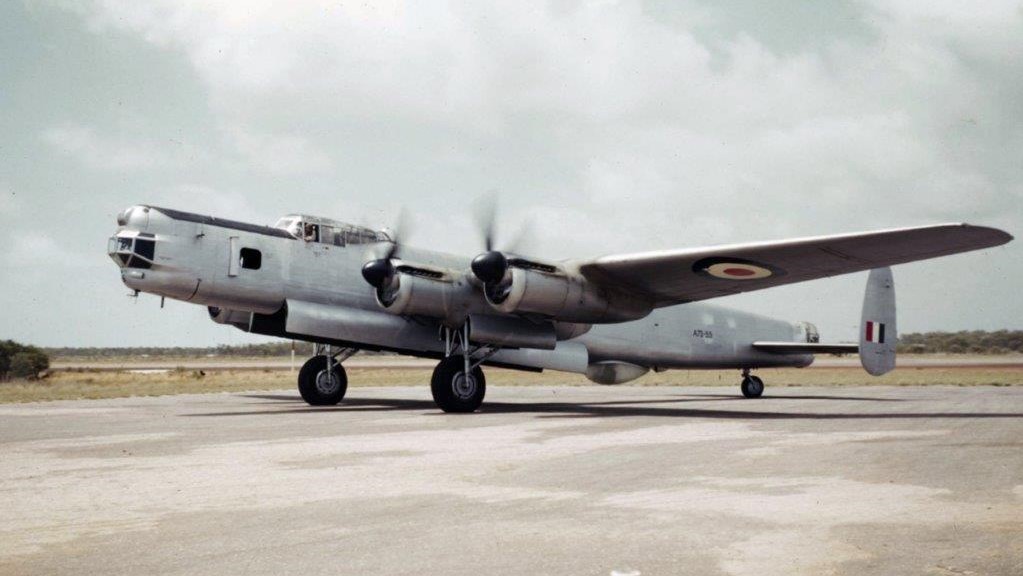|
|
||
|
||
|
Privacy Policy | Editorial Policy | Profit Policy | Join the Association | List of Members | Contact us | Index | Links |
||
|
Back Go to page: 1 2 3 4 5 6 7 8 9 10 11 12 13 14 15 16 17 18 19 20 Forward |
||
|
John Laming
Aeroplanes and other stuff. |
||
|
Contents.
Diary of a pilot: What goes up - might come down. David Gunson.
|
||
|
Just ask Anya.
Occasionally, while training pilots who have booked practice sessions because of forth-coming interviews and simulator assessments, I have started with "How about we first do some circuits and landings?”
|
||
|
|
||
|
Some immediately go heads down into the computer display, typing a circuit with downwind waypoints, base leg turning points and final intercepts. Finally, a work of art like a Pablo Picasso painting, is built up on the computer screen. After that, all the pilot needs to fly a perfect circuit, is to keep the flight director needles centred. Well that is the theory, of course. Each booking is usually for one hour and because simulator time is expensive, every minute wasted in unnecessary actions is money out of their pocket. As their fingers flash over the keyboard, I gently remind them they have already lost five minutes of flying practice when all that was needed was an HSI, ADI, altimeter and ASI to fly the aeroplane. Yet, many of today’s pilots are usually so addicted to the automatics, that the thought of switching off the autopilot and flying manually is practically a May Day situation. These pilots may already have hundreds of hours on 737's with most of the time on autopilot and flight director, yet, when coaxed into switching off the automatic features and told to fly by looking out of the cockpit on the downwind, base and final leg, afterwards the almost universal reply is "Jeez - I enjoyed that - I haven't done circuits since flying a Cessna 172.”
Many years ago, I was a contract captain with a German charter operator based in Hamburg, Germany, flying the 737-400 and 500 with German first officers. It was there that I crewed with my first female first officer. She was relaxed after flying with other British contract captains as they seemed less strict than their German counterparts.
We were flying back from Spain into Hamburg on a beautiful moonlit night and I was mesmerised at the sight of all the city and village lights over that part of Europe. The final track to Hamburg was by coincidence lined up with the duty runway from 100 miles out and Anya as PF (for that was her name) had everything set up in the FMC and of course the automatics did a good job. Top of descent came up on the screen and my mind went back to the long straight-in approaches I had done into Pacific island atolls in my previous job. In those days, we used the venerable 737-200. There was no FMC and we simply used DME v Height to fly the descent on profile. Our aircraft had a FD108 flight director but most of us never bothered to use it. It became a matter of personal pride to fly the descent profile without resorting to use the speed brakes. There was a satisfying sense of achievement if all worked out nicely to over the fence, on slope and on speed.
|
||
|
|
||
|
"Anya", I said, at 100 DME Hamburg straight ahead, "how about you take out the automatic pilot and fly a profile descent straight into Hamburg with no flight director and no autothrottles?” Anya wasn't sure what I meant, probably because being German, English was her second language and I talked too fast anyway. "You know, DME v Height or three times the height plus 10" I said. Anya looked aghast at my suggestion and covering the cockpit voice recorder with one hand, she whispered “Shhh." She seemed scared of Big Brother.
With some cajoling and promising not to tell anyone about this shocking decision not to use LNAV and VNAV, I talked Anya into the descent profile, manual flying, manual throttle and FD off. From 100 miles out she flew it beautifully all the way to touch-down with just a little help from me with flap/speed control towards the end. A greaser landing topped it all off and we heard the passengers clapping in admiration (or was it relief) at Anya's smooth landing.
As we taxied towards the Hamburg Terminal, Anya looked over at me and she said "Now that was real flying, wasn't it- - and thank you very much - but please promise me you won’t tell anyone, will you", pointing to the CVR microphone. "I won't tell a soul, Anya and you flew beautifully," I replied.
Now 25 years later I have broken my promise. If Anya happens to read this story, I know she will understand and forgive me...
|
||
|
My Neighbour just yelled at her kids so loud that even I brushed my teeth and went to bed. |
||
|
|
||
|
What goes up – might come down.
Back in 1982 David Gunson, an ex-RAF Pilot, turned Air Traffic Controller, was guest speaker at an evening event.
David was born in Sheffield in the UK (where he insists, the M1 is cobbled) and as a young man went to work in a steel foundry, but soon discovered that the opportunities for flying were far too limited. He left and joined the RAF, spending ten years Coastal Command on Shackleton aircraft. He is thus well qualified to take you behind the scenes in the world of flying and, with tongue very much in cheek, his 'talk' skilfully combines humour with hazard, raising many a laugh - and many an eyebrow.
Dave's humour is based on fact, often mischievously, as with a wry smile he says that, "We force them down narrow corridors, thereby greatly increasing the risk of collision, while at the same time justifying the job of Air Traffic Controllers to keep them apart."
Click the pic to hear it, it’s very funny.
Skyland News.
We have a copy of the December 1979 edition of the venerable SkyLand News. Unfortunately, being over 40 years old, it has faded in places but is still definitely worth a read.
Born in Moresby in the 1970’s, if you were involved in aviation in any way, the mag was a must read.
Click the pic at right to get a copy.
|
||
|
|
||
|
|
||
|
Diary of a Pilot.
Lloyd Knight
I served with the Royal Australian Air Force, No. 9 Squadron, at Vung Tau in South Vietnam in 1969 (May 1969 – Nov 1969). We operated Bell UH-1H Iroquois helicopters, commonly referred to as ‘Hueys’. This nickname derived from their original military designation of HU-1 (Helicopter, Utiltiy-1). The four-man crew consisted of a pilot and co-pilot, a crewman who manned the right-hand M60 machine gun and operated the electric winch and a left-hand door gunner, who also had an M60.
We flew in support of Australian and New Zealand Army units, from their forward base at Nui Dat, which means, small hill. This base was located in Phuoc Tuy Province, about seventy-five kilometres to the south east of the Capital, Saigon (Ho Chi Minh City). The squadron’s main mission was troop-carrying sorties of various types. These included; the insertion and extraction of reconnaissance and fighting patrols, Special Air Service operations, general troop movement and Medical Evacuation (MedEvac). The squadron also had a gun-ship flight.
The troop-carrying helicopters were nicknamed ‘Slicks’. This army slang term described the lightly armed helicopters used to insert up to nine heavily armed combat troops into battle areas and to recover the dead and wounded. They were called slicks because of their relatively smooth sides, compared to the gun-ships with their external armaments. Another explanation for the name is that, often no seats were fitted and the expression referred to the unbroken floor line, which facilitated rapid egress from and access to the cabin.
Gun-ships, commonly called ‘Gunnies’, are helicopters specifically equipped to attack ground targets with a variety of armaments. In our area, the US Army often supplied this service using heavily armed ‘C’ model Hueys. Our squadron’s gun-ship flight flew the same ‘H’ model as the ‘slicks’. They were extensively modified, armed with forward firing mini-guns, M60 machine guns and rocket launchers, as well as the M60 door guns.
The habitat in the province was a mixture of tall tropical forest, tall bamboo and areas of long grass. There were cleared sections, some used for agriculture - others were made with bulldozers and defoliant for military purposes. Small villages, rubber plantations and rice paddies interspersed the whole area.
In the east, there was a low range of mountains we called the Long Hais. The shoreline of the South China Sea stretched from the Vung Tau peninsula, north past the village of Long Hai. The area had been a pseudo Riviera in French Colonial times. This stretch of coast is today redeveloped as a resort area.
In the early days of the squadron’s involvement, the officers occupied one of the old French villas, Villa Anna, with its slightly dilapidated, old-world charm, overlooking the back beach on the south-western side of the peninsula. Non-commissioned ranks occupied two others.
As I explained in the note at the beginning, before my memory goes, or starts to play tricks on me, I thought that I should put ‘pen to paper’ and jot down a few short stories that I recall from those hectic times. I was personally involved in each event. There is a little ‘filling in of colours’, probably a few errors and of course, any dialogue is only approximate.
I have purposely not identified any person in these aviation anecdotes, for we were all equal in our determination and zeal, to get the job done. No doubt some of my colleagues from those days will identify with most of the content.
Lloyd D Knight
The MP and the VC
Some will have seen it in American movies; ‘Blue Thunder’ and ‘Apocalypse Now’ come to mind. Some will have heard tales of it in bars and military messes. I am referring to the story of the alleged practice of prisoners being thrown from helicopters, as an interrogation technique. The theory goes that, if two or more prisoners are being transported, blindfolded and bound, in the back of a helicopter and one is thrown out, then the others will spill the beans when they hear the screams of their compatriot, as he exits the helicopter.
It is possible that some overzealous soldiers have done this, particularly if it was accomplished at a low hover. The prisoners would not know that the helicopter was not cruising at height. So, the effect would be real for the victim, as well as the remainder. The plus side to this case would be that the exercise had no fatal outcome. Even so, it would be a despicable act of torture and would certainly not be condoned by the Australian forces.
No doubt the Viet Cong and NVA would have heard the same story.
I was tasked to fly two Australian Army Military Police, a staff sergeant and a corporal, out to a recent battle site. They were to collect two Viet Cong prisoners and escort them back to Nui Dat for interrogation. Some questioning would have already been accomplished. A prisoner is more likely to give information while he or she is in a traumatised state, immediately after capture.
We landed at the forward location and the MPs went off to collect the captives. I shut down the engine while we waited. The co-pilot and crewman did the walk around checks in preparation for the return flight. This was now a secure area and it had been a busy day so far. So, we took the opportunity to rest up while we waited for them.
After about half an hour we saw the MPs returning with their prisoners. Next to the burley Aussies, they looked diminutive. They wore the black pyjama outfits that were typical VC dress. Both had sacks over their heads and presumably were blindfolded. Their hands were cuffed in front and they were shackled with ties that allowed them to walk fairly normally. However, they would not have been able to run. The corporal’s charge was the shorter of the two, of extremely slight build and appeared to be a female. She allowed her escort to steer her around the front of the helicopter and up into the left side of the cabin.
The other was limping badly and needed to be supported by the six-foot four staff sergeant. As they approached my side of the chopper I could see that this prisoner was shaking terribly. He cried out in pain as the MP pushed him up, albeit gently, into the cabin. He sat on the bench seat against the rear bulkhead as the staff sergeant climbed in. Then, as we started the engine, I heard him crying. He was scared almost out of his wits.
I remember wondering at the time if he had heard ‘the story’ and thought that he was about to meet a sticky end. We were soon up and on our way back to the army base. About halfway to Nui Dat, I looked around and saw that the staff sergeant had his arm around his prisoner’s shoulder. He had his mouth close to the VC’s ear and seemed to be speaking to him above the noise. We normally flew with the doors open, so the crewman and left-hand door gunner had ready access to their M60 machine guns and to provide a little ‘air conditioning’. The big burly soldier appeared to be comforting this poor soul. That sent a little tingle up my spine as I identified with his apparent kindness.
We landed about fifteen minutes later. With the rotors still turning, the corporal and his prisoner exited the left side of the chopper and went off towards the HQ building. The staff sergeant tapped me on the shoulder. As I turned, he gave me a thumbs up and mouthed, ‘Thank you.’ Then he turned to unload his sorry charge. As I spooled up the engine for lift-off, to relocate to our pad, I turned to check that the passengers were clear.
There, out to my right, walking towards the HQ was the staff sergeant. He was carrying his prisoner in his big gentle arms, as if caring for a sick child. I felt very proud to be an Aussie that day and I still get a tear in my eye (it’s there now) and a lump in my throat, whenever I recall that experience.
Dustoff.
Dustoff is the acronym for the motto of the US Army Medical Corps: ‘Dedicated Unhesitating Service To Our Fighting Forces’. The term was used to describe a helicopter operation that provided the MedEvac of wounded troops. In 1969, the US Army 45th Medical Company normally flew these missions. They had units based at Long Binh and Vung Tau, as well as Nui Dat. They did a magnificent job. Sometimes they were busy elsewhere, so we had to look after our own.
It had been a very long day. Dusk descended as we made our final approach to the helicopter landing area at Nui Dat. We completed our approach to a hover and air taxied over to the fuelling area to gas up, preparatory to returning to our main base at Vung Tau, about a twenty-minute flight to the south. A delay on our final mission for the day had made us late, so all the other squadron aircraft had returned to base.
For tactical expediency, helicopters were usually refuelled with engines running. This was potentially dangerous because of fire risk. The pilots’ seatbelts were undone and seat armour retracted to allow rapid escape in the event of a mishap. The crewman conducted the fuelling operation with the door gunner manning the fire extinguisher. I was riding left seat. This is normally the co-pilot’s position in the Huey. Because I was the Squadron Training Officer, I often occupied this seat while the young pilot I was checking, flew from the command, right hand seat. In this case the training officer takes on the co-pilot duties.
As the crewman was completing the fuelling operation, a call came through from the Command and Control Centre, to which I replied, ‘Albatross zero two, go ahead’.
The controller responded, ‘A platoon has come under heavy fire, twenty minutes from your position. One soldier critically injured. Require immediate Dustoff. Both Medical Core units (US Army) are presently deployed and cannot respond. Are you able to accept this task?’
I answered, ‘Albatross zero two, affirmative, go ahead with location and details’.
The other pilot called to the crewman, ‘Dustoff!’ and told the door gunner to grab the spare stokes litter. This is a seven-foot long stainless-steel stretcher fitted with straps and used to lift casualties, or cargo. One of these units was located near the fuelling plant for just such an exigency. The crewmen had also received rudimentary first-aid training, to enable them to cope with this type of mission.
I copied down the details, which were in code: the location grid reference, call sign and radio channel and the nature of injuries. The wounded digger had four gunshot wounds to the thorax. Because of the seriousness of his injuries, we were also instructed to take the casualty direct to the military hospital in Saigon.
I advised the crewman and door gunner to wear their bulletproof plates under their flak jackets because we could come under attack. These curved shields, made of Kevlar, were part of the bulletproof vest issued to all crew. The crewman and gunner often placed them under their seats, to protect their important parts from rounds fired from directly below the aircraft. The other pilot and I exchanged seats and he took over the co-pilot duties.
With all checks completed, we took off into the now black night and headed west at an altitude of around two thousand feet, about six hundred metres, to our task site. The co-pilot established communications with the platoon. The officer in charge advised us that the potentially hot area was several hundred metres to their south. They were fairly sure that the enemy had either succumbed to the return fire, or had quit the vicinity. He had called in the gunnies in case they went hot again.
Because they were located in tall timber, he warned that we would need
to perform a hundred-foot winch lift. The casualty wasn’t really stable.
He had lost a lot of blood and there was nothing more they could do for
him, except get him to hospital. He was already strapped into a fold-up
stretcher and
The Huey is equipped with two powerful, controllable lights. The landing light, under the belly, can be rotated from vertically down to straight ahead. The searchlight is located under the nose and can be swivelled in all directions. Either pilot can control the lights and the crewman/winch operator, on the right side of the aircraft, can switch the landing light on and off.
We would use no other lights so as to make the aircraft as inconspicuous as possible.
The patrol had floated a balloon light, which was attached to a string, up through the trees to mark their position. This is a helium-filled, red balloon with a small battery powered light inside. They also flashed a Morse code letter with a shielded torch, which we read back to confirm their identification. This was an added security measure, used in case the enemy also sent up a balloon to attract the helicopter crew to the wrong location and thereby become a target.
We made our approach to the balloon, heading west to place the left-hand gunner facing the previously hot area. I turned the landing light on at the last minute and told the crewman, ‘You have the Con’. During winching (hoist) operations, the pilot hands over the directing of the aircraft’s position to the crewman/winch operator. He then coaches the pilot into the final position, something similar to the old WW2 bomb-aimer. He keeps the pilot informed about the progress of the deployment of the winching cable, the hook-up and the instruction to ‘Take the weight’. The pilot applies power to ensure that the helicopter is capable of lifting the extra load. Then the crewman reels up the patient, keeping the crew informed of the progress of the operation. He also keeps a check on the tail rotor’s clearance from obstacles. It’s a highly responsible job.
The crewman gave me the last few corrections to our position, to place
the aircraft directly over the casualty. I descended until the skids
were at treetop level, having ensured that the tail rotor was in a clear
area. The crewman started the cable on its way to the wounded man below.
When the
The man on the ground yelled over the radio, ‘Get that chopper out of there!’ I had already switched off the light and was applying power, climbing vertically so that the hook wouldn’t snag in the trees. The co-pilot set maximum transient power and we climbed at about four thousand feet per minute. The winch operator was madly reeling in the cable and the gunner continued letting them have it to our left.
As we went through a one-hundred-foot increase in altitude, I nosed over and high-tailed it out of there, into the safety of the big black sky. As we climbed rapidly to the west, two gunnies rolled into an attack on a reciprocal course out to our left. We turned right, to the east and set up an orbit at a couple of thousand feet and three kilometres from the firefight.
After about twenty minutes we advised the Platoon Leader that we would need to refuel if we were going to take the casualty to Saigon. He replied that they would need at least half an hour to subdue this new threat, so we scurried back to Nui Dat. We flew at maximum cruise speed, landed and filled the tanks. We hadn’t been called back in yet, so we returned at our best endurance speed to conserve fuel.
Arriving back on station after an absence of forty minutes, we could see that the fight was still going on. It was hectic down there with heavy machine gun fire, grenades and rockets. The gun-ships were giving their best, making pass after pass against the heavy resistance. We commenced orbiting again and waited to be called in to make another attempt. During this period of relative respite, the crew started to talk on the intercom. There was an aura of virtual light heartedness that was probably a self-protective reaction, due to various levels of anticipation as to what we could expect next. We discussed the pros and cons of risking being shot down.
I have never felt ‘scared’ during combat operations. That seems to come later when you are safe and have time to ponder the ‘what ifs,’ however, I do recall vividly that throughout that half hour wait, I certainly felt apprehensive about returning to such a potentially dangerous situation.
Decisions, decisions! It would not be smart to place the aircraft and crew and the troops underneath, in a position where we could all be wiped out by being shot down. On the other hand, our duty was to rescue the person down there, who was obviously in a life-threatened state.
On that occasion, I didn’t have to make the decision.
After about another twenty minutes, the shooting had ceased and the gunnies said they were returning to base. The bloke on the radio called us saying, ‘Thanks for your help Dustoff, the battle’s over, come back in the morning.’ The young door gunner, who had just experienced his first fire-fight said, ‘Thank Goodness, he must be alright now.’ There was a moment’s silence before the older, experienced crewman said, ‘Yeah, I suppose so. We don’t recover body bags at night.’ The young man sobbed into his microphone, ‘I didn’t know that’s what he meant – but I didn’t want to go back down there again.
Over the years I have often wondered what a difference a few more minutes would have made. If we’d managed to get him on the hook before they started shooting; maybe we could have towered out and saved him. Then I think about the other possible outcomes. He may have been snagged in the trees and brought us all down. He may have been shot again!
And of course, with such severe injuries his chances of surviving that kind of ordeal would have been extremely slim.
|
||
|
|
||
|
|
||
|
Lincoln.
|
||
|
|
||
|
This photo of the 10 Squadron Long Nose Mk 31 Lincoln, A73-55, shown here at Broome in 1956, was one of the best I have ever seen.
I flew 3000 hours on Lincolns.
|
||
|
|
||
|
|
||
|
|
||
|
Back Go to page: 1 2 3 4 5 6 7 8 9 10 11 12 13 14 15 16 17 18 19 20 Forward |
||

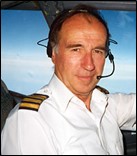
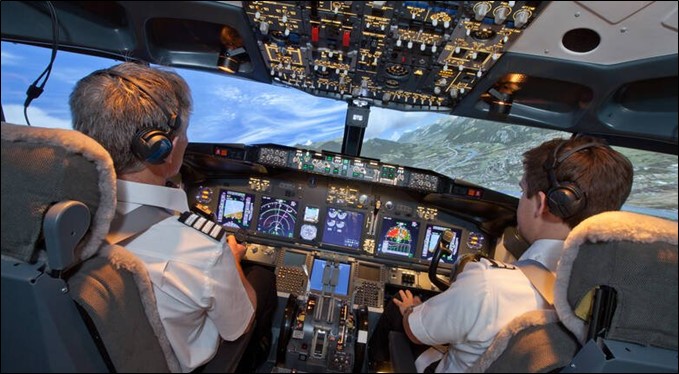
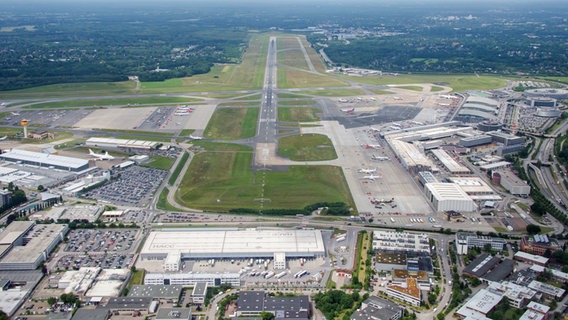
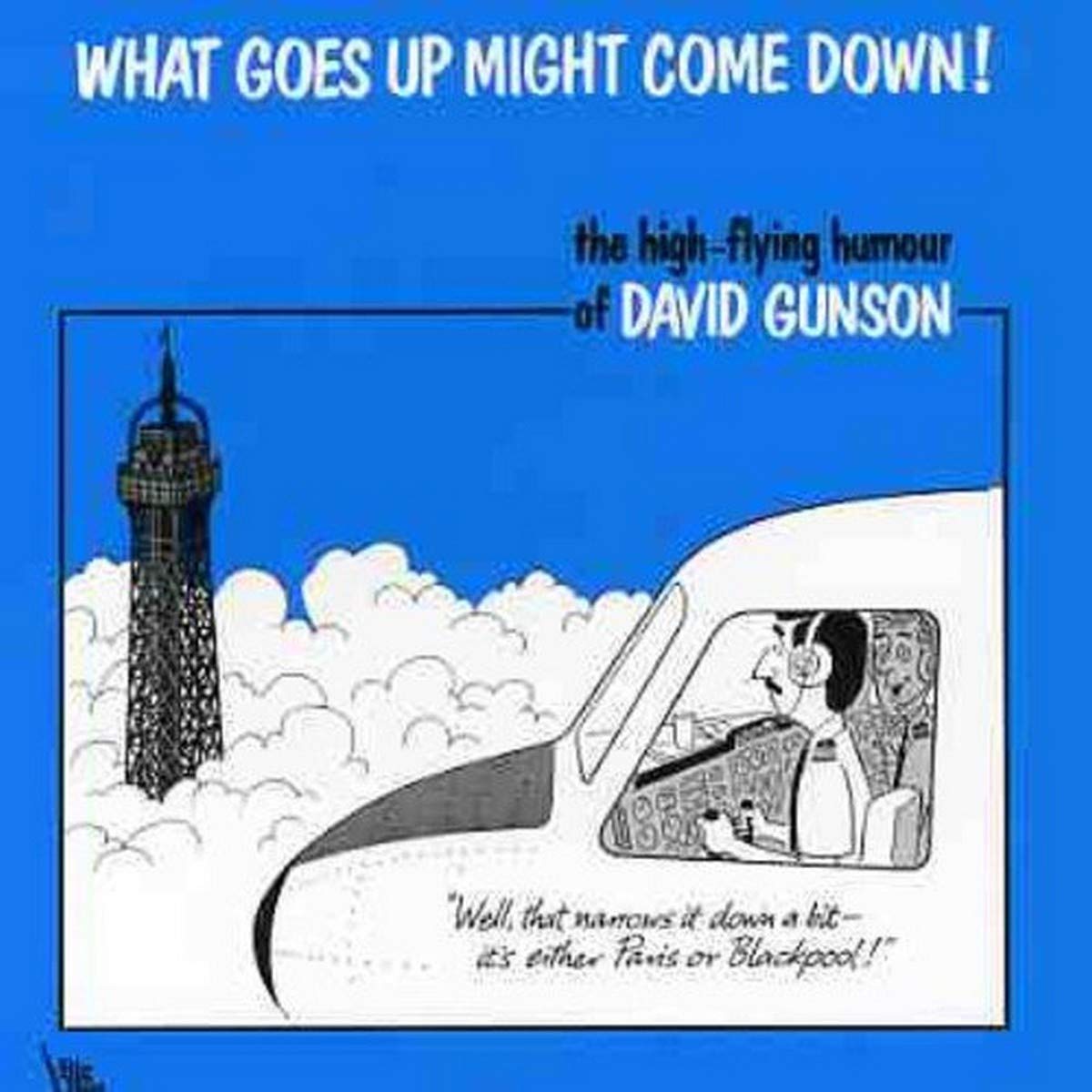
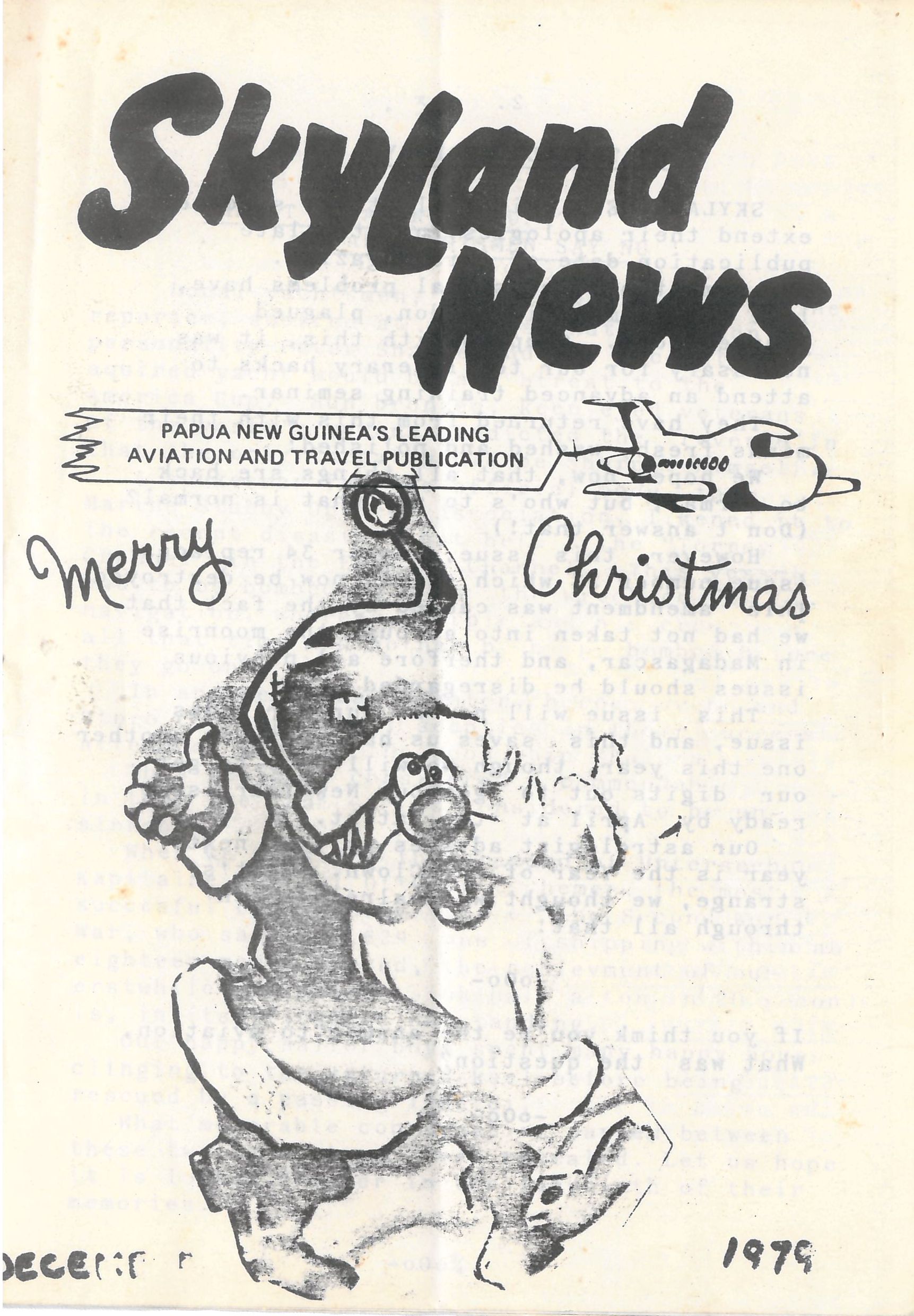

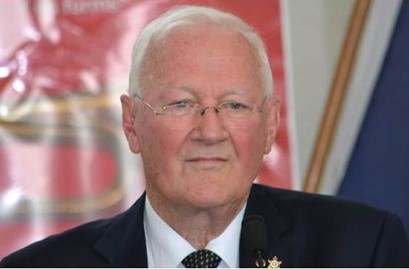
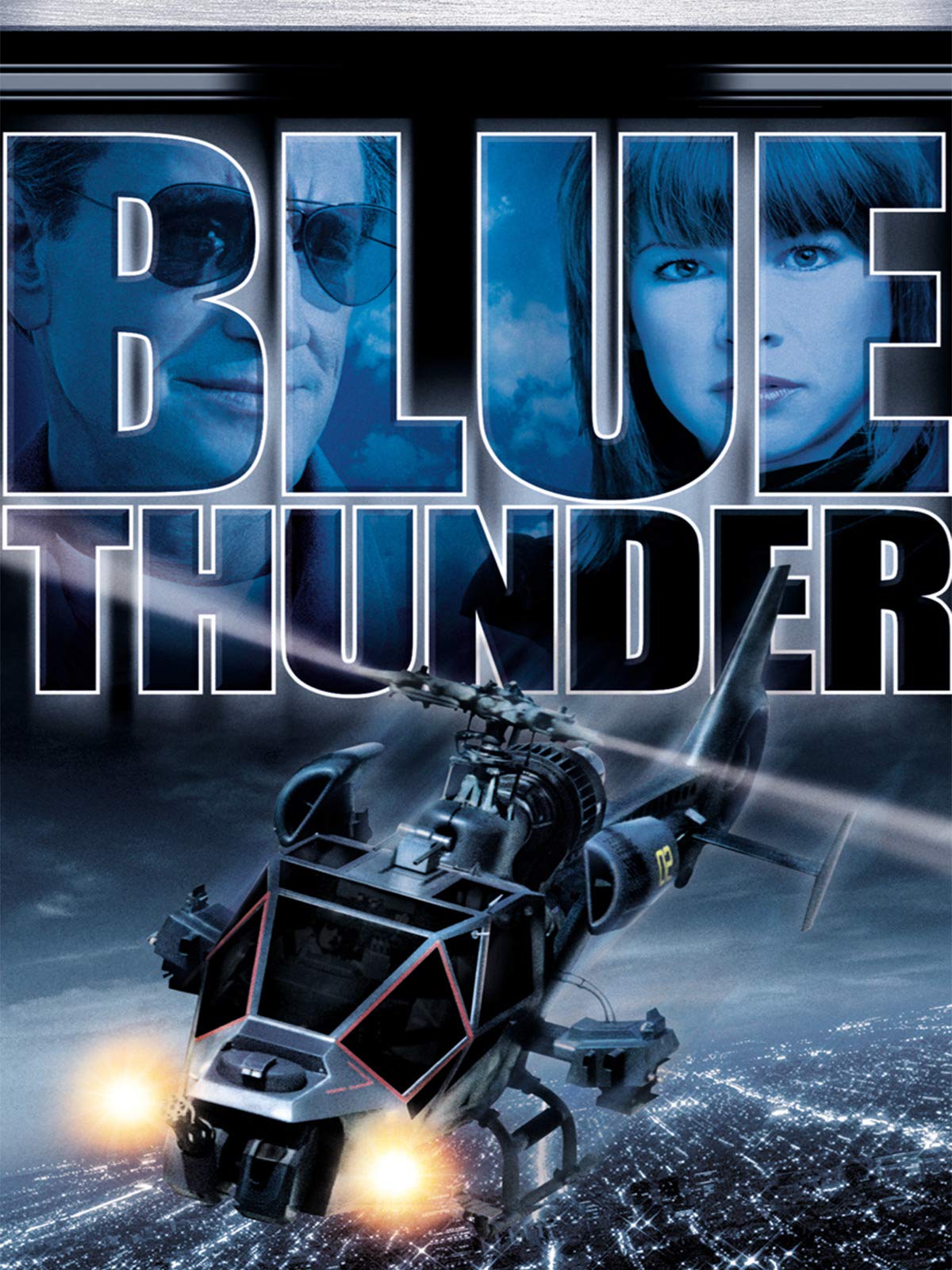
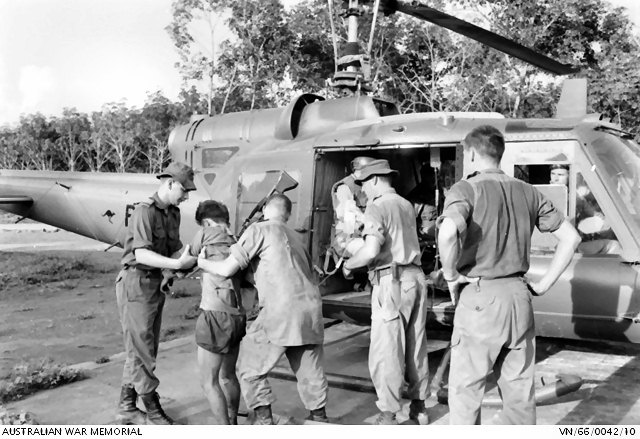
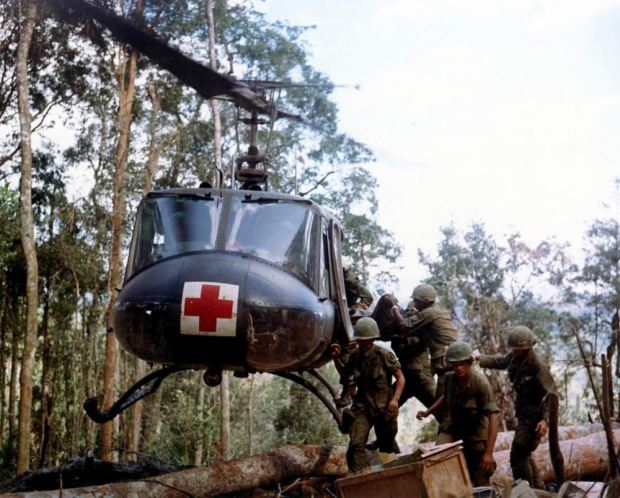
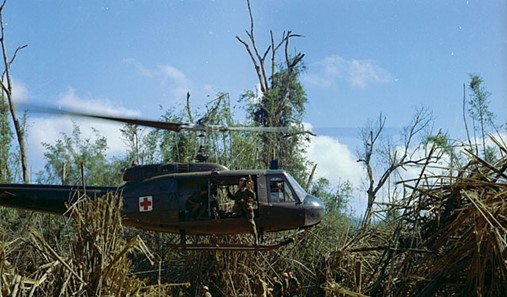 ready to be lifted. I advised that we would terminate our approach to a
hover in the treetops using the landing light.
ready to be lifted. I advised that we would terminate our approach to a
hover in the treetops using the landing light.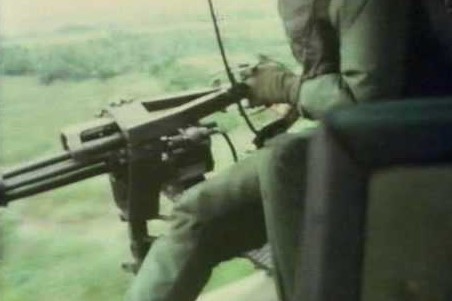 hook was about half way down, all hell broke loose to our left. Heavy
fire with tracer rounds came up through the trees and, our door gunner
started pounding away with his M60 machine gun. The Aussie troops below
also returned heavy fire and another fight was on.
hook was about half way down, all hell broke loose to our left. Heavy
fire with tracer rounds came up through the trees and, our door gunner
started pounding away with his M60 machine gun. The Aussie troops below
also returned heavy fire and another fight was on.
